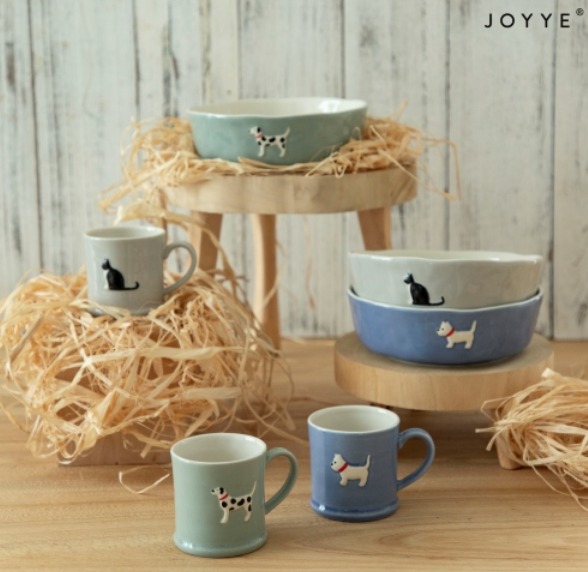In today’s dynamic and competitive tableware market, finding the right ceramic tableware supplier has become more than just a matter of convenience—it’s a strategic business decision. Whether you’re sourcing for a retail business, a hospitality brand, or even for a curated home dining experience, the right supplier determines the quality, reliability, aesthetic, and pricing that ultimately defines your tableware brand.
As 2025 continues to see a shift toward sustainability, artistic craftsmanship, and innovative ceramic designs, buyers must prioritize not just the product but the partnership. This article explores the essential factors to consider when selecting a reliable ceramic tableware supplier, the emerging trends influencing purchase decisions, and how to ensure long-term value from your supplier relationship.
Why Ceramic Tableware Remains a Top Choice in 2025
Before diving into the criteria for choosing a supplier, it’s essential to understand why ceramic tableware continues to dominate dining tables across households, restaurants, and hotels worldwide.
1. Aesthetic Appeal
Ceramic allows for intricate designs, glazes, and textures. From rustic finishes to modern minimalism, ceramics provide unmatched design flexibility.
2. Durability & Functionality
High-fired ceramics, especially stoneware and porcelain, offer excellent resistance to heat, moisture, and daily wear—making them ideal for regular use.
3. Sustainability
Ceramics are made from natural materials and can be eco-friendly when produced with responsible methods. This aligns with the growing demand for sustainable product sourcing.
Key Factors When Choosing a Ceramic Tableware Supplier
Choosing the right supplier involves more than checking product catalogues. Below are the critical areas to evaluate:
1. Product Quality and Material Standards
High-quality ceramic tableware should meet international standards, including FDA, LFGB, or SGS certifications. Check the material type: porcelain, bone china, earthenware, or stoneware. Each serves different market needs.
Pro Tip: Ask for sample pieces before committing to large orders. This gives you a hands-on look at glaze consistency, finish, weight, and durability.
2. Design Variety and Customization Options
A top-tier ceramic tableware supplier should offer a wide selection of styles, colors, and finishes. Look for suppliers that provide:
- Seasonal collections
- Modern, classic, or rustic design lines
- Custom logo printing or color matching for branding
Customization is especially important for restaurants, boutique stores, and interior designers who want their tableware to reflect a unique brand identity.
3. Production Capacity and Lead Times
Evaluate the supplier’s production scale. Can they handle bulk orders without delays? A reliable supplier should provide:
- Clear lead times
- Transparent production schedules
- Consistent order tracking
Late deliveries can harm your brand, especially if you’re operating in fast-moving retail or hospitality sectors.
4. Certifications and Compliance
Always check if the supplier adheres to international safety and production standards. This ensures the tableware is food-safe, lead-free, and compliant with regulatory norms in your target market (e.g., North America, EU, UK, Asia).
5. Packaging and Shipping Reliability
Packaging should protect ceramic products during long-distance transport. Damage due to poor packaging leads to losses and potential customer dissatisfaction. Inquire about:
- Drop test standards
- Layered and eco-conscious packaging
- Insurance policies
Why Sourcing from a Trusted Online Supplier Matters
The rise of B2B eCommerce has made it easier than ever to find ceramic suppliers online. However, not all suppliers are created equal. Working with a credible online brand with a well-maintained platform, detailed product listings, and client testimonials reduces risk.
One such example is this trusted ceramic tableware supplier offering extensive collections that combine artisan appeal with high-quality manufacturing standards. Their catalog showcases functional and stylish options for both modern and traditional tablescapes, perfect for hospitality or retail needs.
Top Ceramic Tableware Trends in 2025
Knowing what’s trending can guide your buying decisions and help you align your product selections with customer demand.
1. Textured and Reactive Glazes
Earthy tones and reactive glaze finishes are dominating the ceramic scene. Each piece appears slightly unique, offering a handcrafted feel even in mass production.
2. Asymmetry and Organic Shapes
Consumers are favoring wabi-sabi aesthetics—embracing imperfect, organic forms over rigid symmetry. This reflects a broader cultural shift toward authenticity and individuality.
3. Stackability and Storage Solutions
Smart storage is a selling point, especially in urban markets where kitchen space is limited. Suppliers who design stackable tableware add value to their offerings.
4. Mix-and-Match Styling
Rather than selling matching sets only, suppliers now offer modular collections that allow customers to mix colors, patterns, and textures for a more personalized table setting.
Cost Considerations: Balancing Price and Quality
Going for the cheapest option often results in poor durability and customer dissatisfaction. At the same time, premium doesn’t always mean better. Here’s how to evaluate pricing smartly:
- Compare price per unit in context with quality certifications and design finish
- Consider total cost: shipping, breakage rate, customs duties, etc.
- Ask about volume-based discounts, especially for bulk or recurring orders
Always ask for quotations from multiple vendors but lean toward those offering the best long-term value—not just the lowest upfront cost.
Building a Long-Term Relationship with Your Supplier
Think beyond your first order. Establishing a strong partnership with your ceramic tableware supplier can lead to:
- Better pricing for long-term commitments
- Priority access to new collections
- Early alerts on market trends or supply chain updates
Communication is key.
Choose a supplier who is responsive, transparent, and flexible. Look for one that offers after-sales support and is open to feedback.
Questions to Ask Before Finalizing a Supplier
Here’s a checklist to guide your decision:
- What certifications do your products hold?
- Can I see product samples or a virtual showroom?
- What are your production timelines for bulk orders?
- What’s the breakage policy during shipping?
- Do you offer customization? What are the MOQ (minimum order quantities)?
- Can you supply client references or testimonials?
- Do you use sustainable practices in your production?
Getting clear answers will help you assess professionalism and transparency.
Red Flags to Watch Out For
Unfortunately, not all suppliers deliver what they promise. Be cautious of:
- Vague communication or delayed responses
- No physical address or verified company background
- Poor-quality product photos or generic descriptions
- Unclear pricing models or hidden fees
- Negative online reviews or lack of any reviews
Performing due diligence before placing a large order protects your brand integrity and financial investment.
Leveraging Supplier Reviews and Market Reputation
In 2025, social proof remains a major decision influencer. Always check:
- Customer reviews
- Industry forum discussions
- YouTube unboxing and review videos
- Third-party inspection results (where available)
Suppliers with strong reputations and consistent quality get recommended repeatedly across channels.
Conclusion: Making the Right Choice for 2025 and Beyond
Finding the right ceramic tableware supplier isn’t just about aesthetics or pricing—it’s about finding a partner who aligns with your brand values, customer expectations, and long-term goals.
In a world where consumers seek functionality, beauty, and sustainability all at once, your supplier should help you deliver on those promises. From quality assurance and trend-forward designs to reliability in supply chains, a great supplier becomes a strategic asset for your business.
If you’re sourcing high-quality ceramic tableware in 2025, look no further than this ceramic tableware supplier, known for their elegant collections and industry-standard quality. With the right partnership, your tableware offering can be as compelling as the meals served on it.



